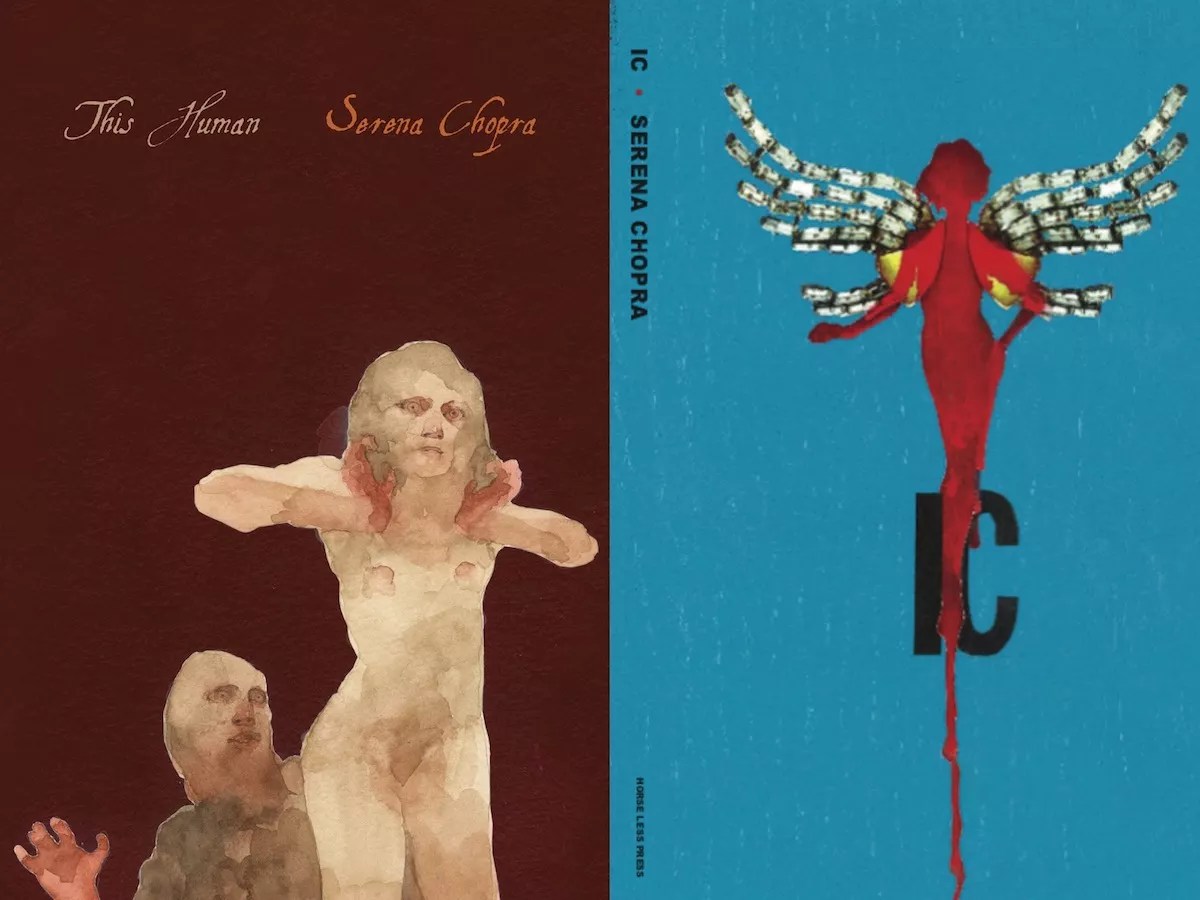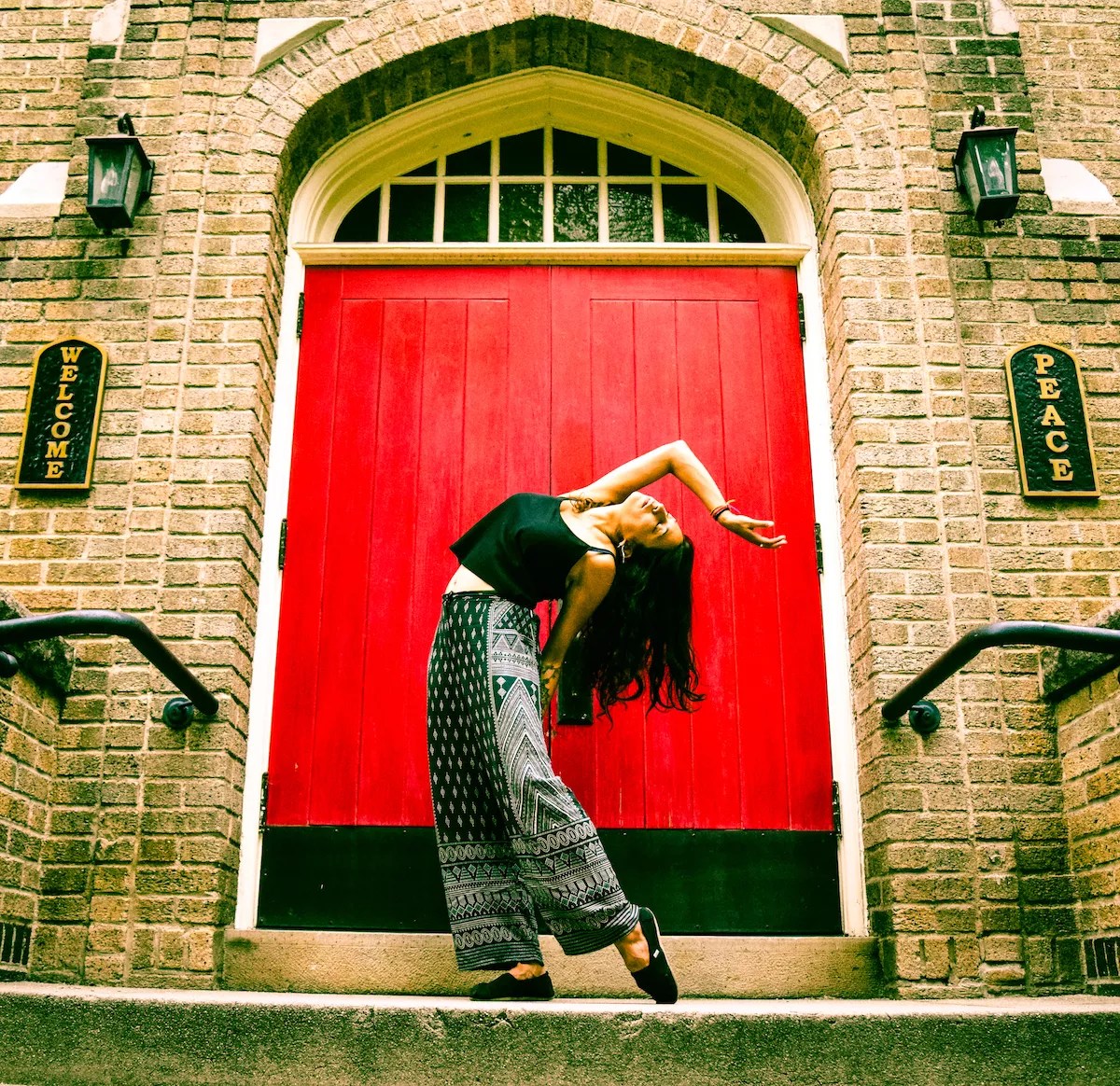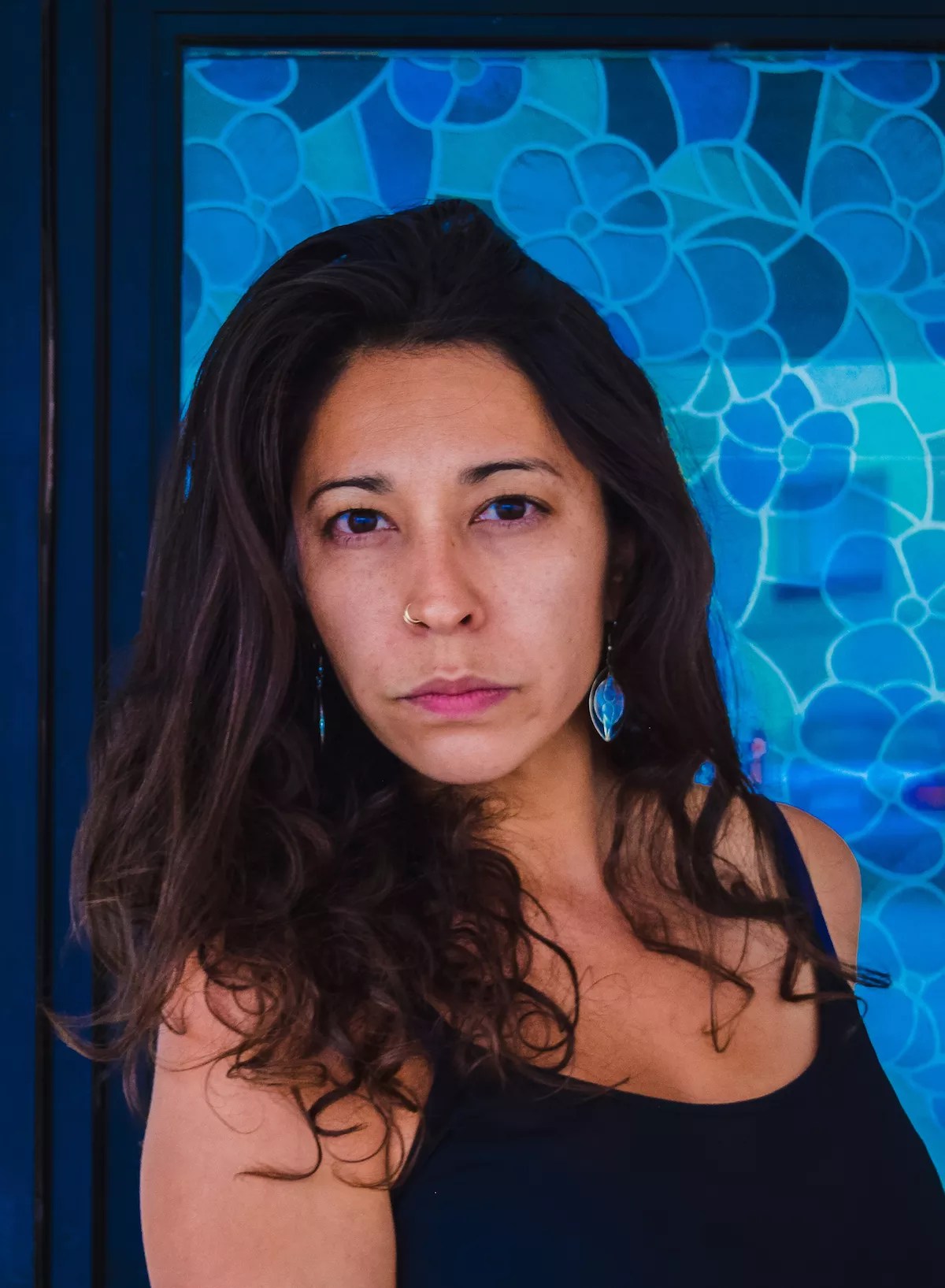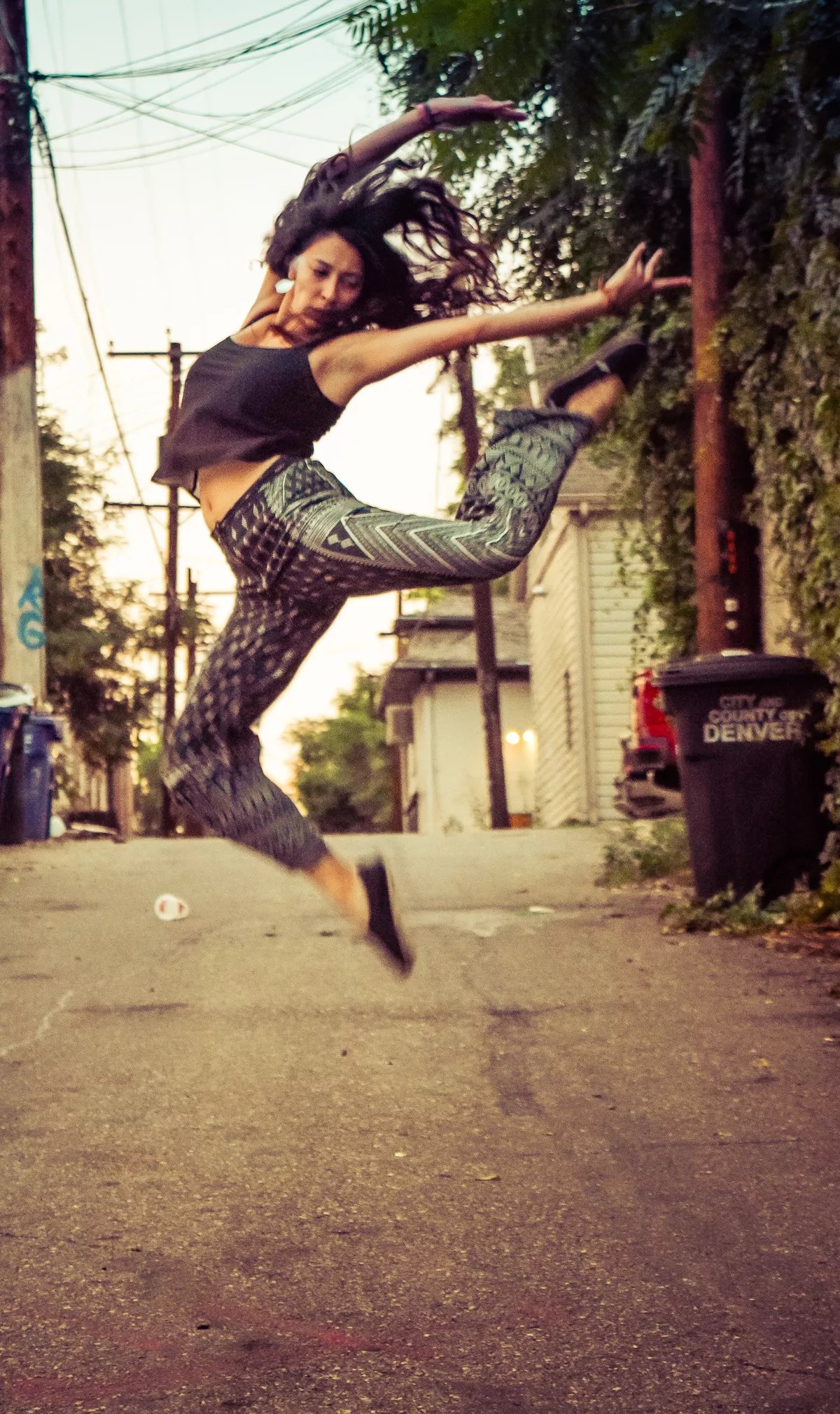
Photo credit: Kasey Ferlic

Audio By Carbonatix
#8: Serena Chopra
A thinking, boundary-less creative in multiple disciplines, Serena Chopra is a published poet and writer, a Fulbright Scholar, a performance artist, a dancer, a teacher and a member of the queer community who’s always looking over the wall toward the next challenge or collaboration. As a poetic and elegant writer, Chopra sees the world in fully formed paragraphs and experiential verses that come directly from her mind’s eye, a point of view she beautifully shares in her answers to the 100CC questionnaire.

Covers of Chopra’s books of poetry.
Photo credit: Kasey Ferlic
Westword: What (or who) is your creative muse?
Serena Chopra: I believe I am more of the duende persuasion than the muse. While there is no perfect translation for duende, the poet Federico García Lorca describes it as being “roused from the furthest habitations of blood.” Whereas the muse comes from outside us and “can do relatively little since she’s distant and so tired,” duende arrives from deep within. Duende arises from a darkness beyond the visible, shattering “the sweet geometry we understand” and necessitating radical shifts in form and sensation. Rather than attempting perfection, duende presupposes the mutability of logic and reality; it is the keening struggle between what appears and what is lost to the mystery.
Certain encounters stimulate a psychic nervous system that ghosts the physical nervous system; I feel an elevated resonance that constellates emotional and conceptual information between myself and that which is encountered. There is a process of re-situating memory in which my body records resonant concepts as movement, rhythm, gesture, sound. In poetry I translate this into, say, the sound of words over a poetic line. In drawing I succumb to the choreography between hand, eye and light. In dance I find the resonant momentum at its most internal sensation and turn that out into expressive gesture.
So it’s not that the external world necessarily inspires me, but it is rather the way that my being – which is a lineage more distant than I can remember – syncs and communes resonant experiences with, say, night rain or a fist fight or a decaying bouquet, into emotional, sensual information. Duende is that I hear my traumas, loves, joys, whatever resonating in bodies beyond myself. Bodies use each other to express themselves; the rain uses me to be heard in a poem, and I use the rain to listen to my longing, for example. Duende is that expressions resemble and resemble, and that is how I come to translate them in art.

Photo credit: Kasey Ferlic
Which three people, dead or alive, would you like to invite to your next party, and why?
Well, I am very into parties. I love parties and attend plenty of them. For me, a party remains the best way to connect with community and culture. Whereas I sometimes feel a bit nervous and awkward interacting with folks one on one, at a party I can indulge in the love and expression of others without feeling the pressure or expectations of intimate conversations. For me, as a writer, words can sometimes feel too weighted to toss around casually, colloquially. I get nervous about being long-winded or airy. So that is just to say that I love parties, and my favorite parties are dance parties. I believe that the best communication/communion for me happens on the dance floor, where everyone you know or don’t know is feeling through the musical and lyrical complexes together. Dance parties are cathartic and human; when I get home from a dance party, I’m covered in so much human – sweat, kisses, glitter, my ears ringing with human noise.
Generally, I attend/host two kinds of parties: queer parties and writer parties. There’s a lot less dancing at writer parties, but I’ve been trying to change that over the years. For my queer party, I’d like to invite Marlene Dietrich, because I’m not usually a wallflower, but I think she was probably a good wallflower, and I’d like to try that with her. Also, she loved drag: We could talk Ru Paul’s Drag Race, and she would probably be into a few outfit changes over the course of the evening.
For my writer party, I’d like to invite Mina Loy, because she was a strange, quirky creative working in many mediums – she was a painter and poet and she also made hats and lamps – so I feel kinship with her re: creating without medium/material borders. I admire her unabashed innate drama – she loved and held grudges intensely and desperately and wrote a wild, arguably controversial “Feminist Manifesto.” She also traveled the world and ended up in nearly every major art movement/community of her time and was the only heterosexual woman invited into Natalie Barney’s lesbian circle. Despite my asthma, I would invite her over for a late-night smoke after the party and let her ramble on and on. Mina was cynical with a brutal sense of humor, and I’d like to hear her opinion about nearly everything.
Finally, I’d invite Djuna Barnes to both parties – first, because she was a sophisticated gossip, and second, because I’d like to feel out our chemistry around friends before asking her on a date.

Photo credit: Kasey Ferlic
What’s the best thing about the local creative community in your field – and the worst?
The best thing is that the community feels like family. I feel supported, engaged and inspired by creatives in Denver. I am also grateful for all the collaborative efforts that happen here, across genre and medium. People are willing to take risks here, and that’s really fun and exciting.
The worst part is that I still encounter problematic issues pertaining to the legitimacy of queer (non-dominant) art. As a queer woman of color, it took a lot to legitimize myself – as an artist – but also fundamentally as a body/experience. It took a long time for me to legitimize the ways I took up space and indulged my desires and passions. I think some bodies have been given sociopolitical permission to take up space and so their legitimacy is inherent to their identities. Queers, women, people of color, differently abled individuals, etc., have to work to legitimize their value – they have to put a lot of emotional, mental and physical labor towards legitimization, and even then their legitimacy is always on the edge of dis-believability, worth-less-ness.
I often find that when I work with dominantly cultured individuals, such as straight white men – no matter how woke they think they are – there exists a sense that I need and want to invest in their economy, that I need and want to be legitimized by their values, and therefore I should do more (invest more in their currency) to prove myself worthy of that economy. And even though I recognize that I am always going to fail at achieving legitimization in such economies, when I am confronted with such expectations and pressures, my confidence is challenged and my ability to focus on the work that I am called to do is shaken. There is a sense of anxiety that comes with being a queer artist – our vulnerabilities do not fare well as legitimate currency, and that is not only difficult but painful and exhausting.
Are trends worth following? What’s one trend you love and one that you hate?
Trends can be worth following. More so, though, I find trends are worth investigating, questioning, observing, critiquing.
I love bitmojis. I hate the musical Hamilton.
What’s your best or favorite accomplishment as a writer?
I love composing books. But besides that, I love to collaborate. I was particularly excited about my collaboration with Splintered Light Theater (Dir. Andryn Arithson) on a performance of my book, Ic (short for Icarus). I composed a soundscape for the shadow/light performance that Andryn choreographed. To make the soundscape, I taught myself sound editing. I spliced and stuttered and mutilated the published text with musical scores and colloquial recordings. In doing so, I discovered things about the book that I never noticed during composition. It was amazing to realize a new form/life/expression for the book. Projects like this allow me to recognize that writing and publishing a book is simply one expression, of many possibilities, accomplished. That is to say, similar expressions are possible in many different mediums – I love to be expansive, I love to merge my performative, visual, sonic and linguistic interests, I love to learn new mediums, I love to challenge myself to create in unfamiliar territory – and that is actually my greatest accomplishment as a writer.

Photo credit: Kasey Ferlic
You’ve come this far in life. What’s still on your bucket list?
There are these things: I’d like to travel more; I want to learn how to play a string instrument like the cello or violin; my wife and I would like to have kids; I am teaching myself video editing, so I would like to become more proficient in film and digital art; I’d like to get a fancy, post-doctoral fellowship. Mostly, though, there are a few books I feel in my body, and I am getting anxious to write them.
Denver, love it or leave it? What keeps you here – or makes you want to leave?
Aurora is my hometown, so I love Denver. The people here are generally wonderful and the weather is great. I feel like a Colorado gal through and through. I’ve never really lived anywhere else for longer than a year because I love being close to the mountains and prairie. I am saddened by many of the changes that are homogenizing the city’s class and race. Also, I’ve always loved the city’s old architecture, so the monolithic shifts happening around town break my heart. And the bulldozing of the prairie is constantly on my mind. I feel deeply connected to the prairie and watching it disappear has been a lifelong drama for me.
I feel like Denver is now fully embracing its new image, which is great, but also, I think we should invest in retaining its old cowtown grit. Culturally, the queer scene seems to be getting queerer, which excites me. And, as for the artists, I feel like I am surrounded by neat thinkers who are dedicated to their visions and to the community at large.
Who is your favorite Colorado Creative?
Julie Carr has been a longtime mentor for me. I have always admired her fierceness and dedication; she loves poetry, reading and thinking so much, it’s a constant inspiration. She has taught me the importance of moving intellectual work through the body and toward the sociopolitical. Her work is critically motivated and is yet infused with tactile care and concern; her work thinks multiply and is always both intimate and political, vast and nestled in momentary, daily rhythms. Julie continues to be one of my favorite Colorado creatives because like her work, she is smart, passionate, innovative, and a fabulous teacher. I love having conversations with Julie; each time I leave a meeting with her I have so much to consider. It’s a true pleasure to wander with her mind.
Also, I have a few more favorites; I can’t select just one. I deeply admire Khadijah Queen‘s work and Selah Saterstrom is a true visionary. Also, I have an ongoing collaboration with artist Lu Cong called Memory Is a Future Tense, and I think his range in technique and aesthetic, and his constant experimentation with new methods is fascinating. He’s always moving towards image in new ways.

Photo credit: Kasey Ferlic
What’s on your agenda in the coming year?
I’m working on a few books and some essays. I’m planning some collaborations and looking forward to getting back into dance class with Angie Simmons this fall. I’m trying to find a publisher for my most recent book. I’ll be teaching courses at the Lighthouse Writers Workshop and Naropa University. My students are so fantastic and I learn so much from engaging the classroom, so teaching brings me a lot of joy. Also, I have a few video/performance/art installation pieces in the works. In the nearest future, I am getting married, I have a few readings lined up around town, and I’ll be showing a dance piece at the Unseen Festival hosted at Counterpath.
Who do you think will (or should) get noticed in the local arts community in the coming year?
Always, more queer artists, always. Also, below are some dancers, writers and visual artists that I am particularly interested in.
Dance: Rowan Salem, Kate Speer, Tara Rynders, Angie Simmons and Kat Gurley.
Poets/Novelists: Alicia Mountain, Christopher Rosales, Natalie Sharp, Mairead Case, HR Hegnauer, Sommer Browning, Carolina Ebeid, J’Lyn Chapman, Aditi Machado and Sueyeun Juliette Lee.
Visual art: Gretchen Marie Schaefer (installation), Joshua Ware (collage), Brien Hollowell (photography).
Serena Chopra is one of many small-press authors who will be reading at the Next Lit Fest, August 16 through 19, at various Denver locations. See Chopra at the Whittier Cafe on August 18 at 4 p.m. Find Next Lit Fest details on Facebook.
Learn more about Serena Chopra online.